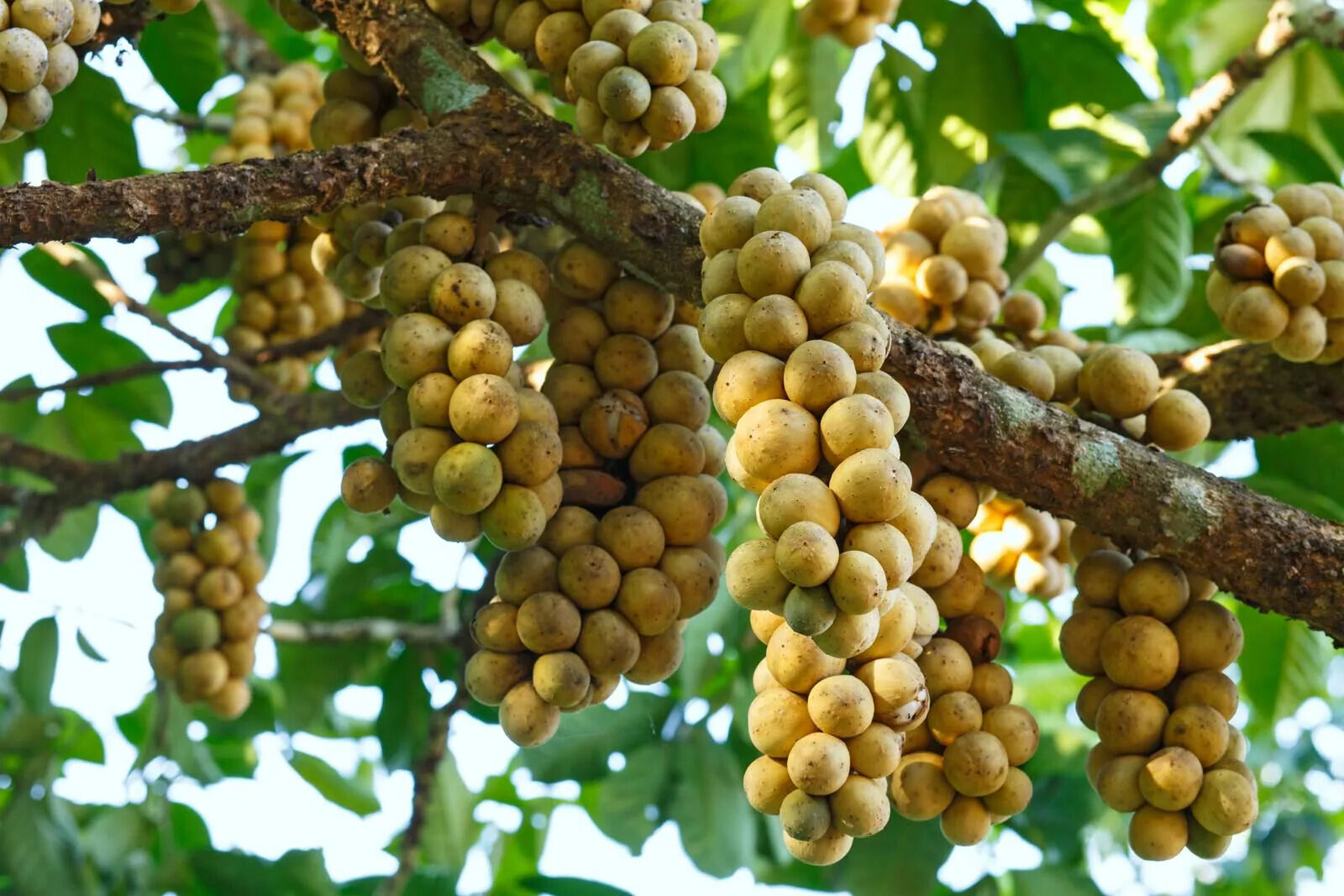
What is Langsat? Langsat, also known as lanzones, is a tropical fruit native to Southeast Asia. This small, round fruit grows in clusters on the Lansium parasiticum tree. Its thin, yellowish skin peels easily to reveal translucent, juicy segments inside. Langsat's flavor is a delightful mix of sweet and tangy, often compared to grapes or lychee. Packed with vitamins, minerals, and antioxidants, this fruit offers numerous health benefits. Popular in countries like the Philippines, Thailand, and Malaysia, langsat is enjoyed fresh, in desserts, or even as a candied treat. Curious about this exotic fruit? Here are 34 fascinating facts about langsat!
What is Langsat?
Langsat, also known as Lansium parasiticum, is a tropical fruit native to Southeast Asia. It is popular for its sweet and tangy flavor, often compared to a mix of grapes and grapefruit. Let's dive into some fascinating facts about this unique fruit.
-
Langsat trees can grow up to 30 meters tall, making them quite impressive in size.
-
The fruit is typically round or oval, about the size of a golf ball.
-
Langsat has a thin, yellowish skin that turns brown as it ripens.
-
The flesh inside is translucent white, divided into five segments.
-
Each segment contains one or two seeds, which are bitter and should not be eaten.
-
Langsat is often confused with its close relative, the duku, but they have distinct differences in taste and texture.
Nutritional Benefits of Langsat
Langsat is not just delicious; it is also packed with nutrients that offer various health benefits. Here are some nutritional facts about this fruit.
-
Langsat is rich in vitamin C, which helps boost the immune system.
-
It contains dietary fiber, aiding in digestion and preventing constipation.
-
The fruit is low in calories, making it a healthy snack option.
-
Langsat has antioxidants that help fight free radicals in the body.
-
It also contains small amounts of calcium and phosphorus, essential for bone health.
-
The fruit has natural sugars, providing a quick energy boost.
Cultural Significance of Langsat
Langsat holds a special place in the cultures of Southeast Asia. It is often featured in festivals, traditional medicine, and local cuisine.
-
In Malaysia, langsat is a popular fruit during the fruit season, often sold in local markets.
-
The fruit is used in traditional medicine to treat various ailments, such as fever and diarrhea.
-
Langsat is a common ingredient in Southeast Asian desserts and snacks.
-
In the Philippines, langsat is known as lanzones and is celebrated in the annual Lanzones Festival in Camiguin.
-
The wood of the langsat tree is used to make furniture and other wooden items.
-
Langsat leaves are sometimes used in traditional ceremonies and rituals.
Growing and Harvesting Langsat
Growing langsat requires specific conditions, and harvesting the fruit is an intricate process. Here are some interesting facts about how langsat is cultivated and harvested.
-
Langsat trees thrive in tropical climates with high humidity and rainfall.
-
The trees prefer well-drained, sandy soil for optimal growth.
-
It takes about 12-15 years for a langsat tree to start bearing fruit.
-
The fruit is usually harvested by hand, using long poles to reach the higher branches.
-
Harvesting typically occurs twice a year, during the rainy season.
-
Langsat trees are often grown in mixed orchards alongside other tropical fruits.
Langsat in the Market
Langsat is a sought-after fruit in local and international markets. Here are some facts about its market presence and economic impact.
-
Langsat is exported to various countries, including the United States and Europe.
-
The fruit is often sold fresh, but it can also be found canned or dried.
-
Langsat is usually more expensive than other tropical fruits due to its limited growing regions.
-
In local markets, langsat is often sold in clusters, still attached to the stem.
-
The fruit has a short shelf life, requiring careful handling and quick consumption.
-
Langsat is sometimes used to make jams, jellies, and preserves.
Fun Facts About Langsat
Langsat has some quirky and lesser-known facts that make it even more interesting. Here are a few fun tidbits about this tropical fruit.
-
Langsat is sometimes called "the queen of fruits" in Southeast Asia.
-
The fruit's skin contains latex, which can be sticky and difficult to remove.
-
Langsat seeds can be used to make a natural insect repellent.
-
The fruit is believed to have originated in the Malay Peninsula and spread to other parts of Southeast Asia through trade and migration.
The Final Bite
Langsat, a tropical gem, offers more than just a sweet taste. Packed with vitamins and antioxidants, it boosts your immune system and keeps you healthy. The fruit's fiber content aids digestion, making it a great snack for those mindful of their gut health. Its unique flavor, a mix of grape and citrus, makes it a delightful addition to various dishes and beverages.
Beyond its nutritional benefits, langsat holds cultural significance in Southeast Asia. It's often used in traditional medicine and local festivals. The tree itself is also valued for its hardwood, used in furniture and construction.
So, next time you spot langsat at a market, grab a bunch. Enjoy its taste, reap its health benefits, and appreciate the rich cultural heritage it represents. This small fruit truly packs a punch in every bite.
Was this page helpful?
Our commitment to delivering trustworthy and engaging content is at the heart of what we do. Each fact on our site is contributed by real users like you, bringing a wealth of diverse insights and information. To ensure the highest standards of accuracy and reliability, our dedicated editors meticulously review each submission. This process guarantees that the facts we share are not only fascinating but also credible. Trust in our commitment to quality and authenticity as you explore and learn with us.
